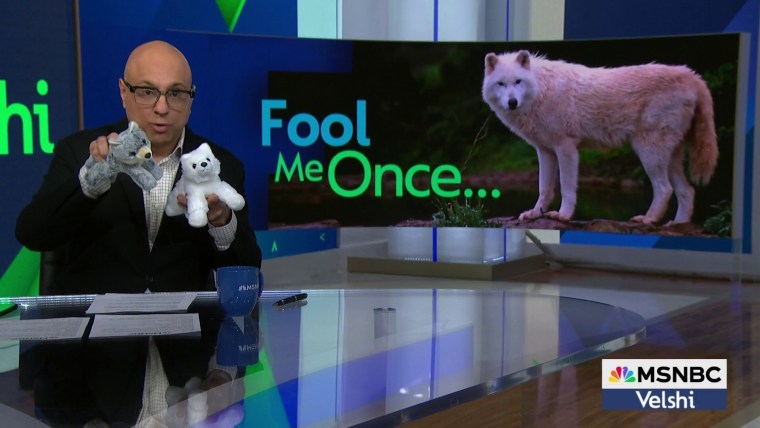This is an adapted excerpt from the April 12 episode of "Velshi."
It's been over 10,000 years since a dire wolf has roamed the Earth. But now, according to scientists for a genetics company called Colossal Biosciences, dire wolves are back — or, as some are calling it, “de-extinct.” The company claims it's the first animal to be “resurrected from extinction.”
The company claims it has successfully brought back the dire wolf and that it’s the first animal to be “resurrected from extinction.”
The news of its return will be the cover story of an upcoming issue of Time magazine. The New Yorker also published a big feature about it last week. Many other sites picked up the story, and it was shared widely on social media.
It’s amazing stuff — until you get a little deeper into the story. While Colossal Biosciences, a company that’s also trying to bring the woolly mammoth back, says dire wolves have returned, scientists not affiliated with the company say it’s just not true. According to those scientists, the dire wolf that Colossal claims to have “de-extinct” using the DNA of long-dead dire wolves is actually just a gray wolf, or, to be more precise, a genetically engineered gray wolf.
Gray wolves are the closest living relatives to the dire wolves, but they’re an entirely different species. Colossal made 20 edits to the genetic code of the common gray wolf to give it some dire wolf-like characteristics: snow-white fur, larger size, a bigger skull, bigger teeth and so on. But experts say that those genetic edits alone don’t mean Colossal has resurrected the dire wolf. The creatures that Colossal tells us are “dire wolves” are actually more like a “hybrid” of the two wolf species, according to one scientist who spoke to the BBC.
However, the claim that dire wolves are back is some slick marketing. If a picture speaks a thousand words, the cover of Time magazine must speak millions. Colossal has even produced a series of attention-grabbing videos to introduce the world to the three “dire wolf” puppies.
One pup is named Khaleesi after a character on “Game of Thrones,” which featured a fantastical version of dire wolves. Millions of people associate dire wolves with “Game of Thrones,” which was one of the most-watched shows in the world at one point, so Colossal knew that there was already a built-in audience and fandom that would be hyped about the so-called return of the so-called dire wolf, which, I remind you, is just a genetically engineered gray wolf.
But dire wolves are not the point of the story here. The point of this story is an effort to pass a thing off as something it is not — kind of like how Donald Trump’s nonsensical on-again, off-again tariffs are not the “art of the deal” or some masterful negotiation. The president, his allies and the White House press team have been trying to convince increasingly skeptical Americans and global investors that this is all part of a grand strategy and not simply the stupid, destructive, policy-bereft chaos that it actually is.
As with the dire wolf that isn’t a dire wolf, I think we all deserve a more thorough explanation of what the “art of the deal” means in this situation, because right now, I want neither a gray wolf made to look like a dire wolf, nor the negotiator in chief wrecking our collective prosperity.
I want neither a gray wolf made to look like a dire wolf, nor the negotiator in chief wrecking our collective prosperity.
The United States just went through its most turbulent week in financial markets since the pandemic, which has now led to the weakening of the dollar and a sell-off in bonds that has jeopardized America’s status as a “safe haven.” JPMorgan CEO Jamie Dimon says that Trump’s tariffs are likely to lead to a recession. Other CEOs say we may already be in a recession.
But this isn’t about Wall Street, it’s about you. Average Americans are quickly losing faith in the economy, too. The University of Michigan just released its latest poll on consumer sentiment; it’s the gold standard in measuring the public’s confidence in the economy. The latest data shows that consumer sentiment is at a historic low. It fell sharply from 57% in March to 50.8% this month, a drop of 11%. It’s the second-lowest reading in the survey’s history. Consumer confidence is now at a lower level than at any point during the Great Recession.
Maybe it’s because I know more about business and economics than I do about art, but I’m struggling to see what’s so artful about Trump's actions here. From what I can tell, it’s a trick: A fancied-up gray wolf isn’t a dire wolf, and a failed attempt at a chaotic tariff plan that could sink the U.S. dollar, spike your costs and your interest rates, and send the world into a global financial crisis while annoying our allies isn’t artful.

